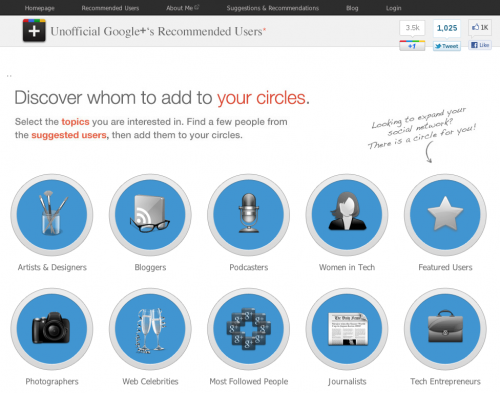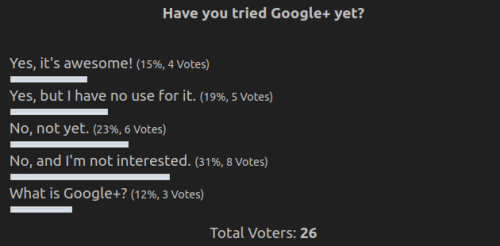A lot of people joining Google+ don’t know who to follow. Most of their friends and colleagues aren’t on Google+ yet. And having an empty circles kind of defeats the whole purpose of the social network. Gladly, there are many blog posts and directories on the Web already, that provide lists upon lists of who to follow, based on interests, popularity, geographical location, and other criteria. The most recent of such listings that I came across is the Unofficial Google+’s Recommended Users. This one has a variety of categories that cover everything from technology and blogging to food and music. Take a look, browse through the categories, and populate your circles. The more people you follow, the more interesting tidbits are coming your way.
P.S.: And if you are still not on the Google+ and need an invite, let me know your Gmail address, and I’ll send you one. I have plenty left.

